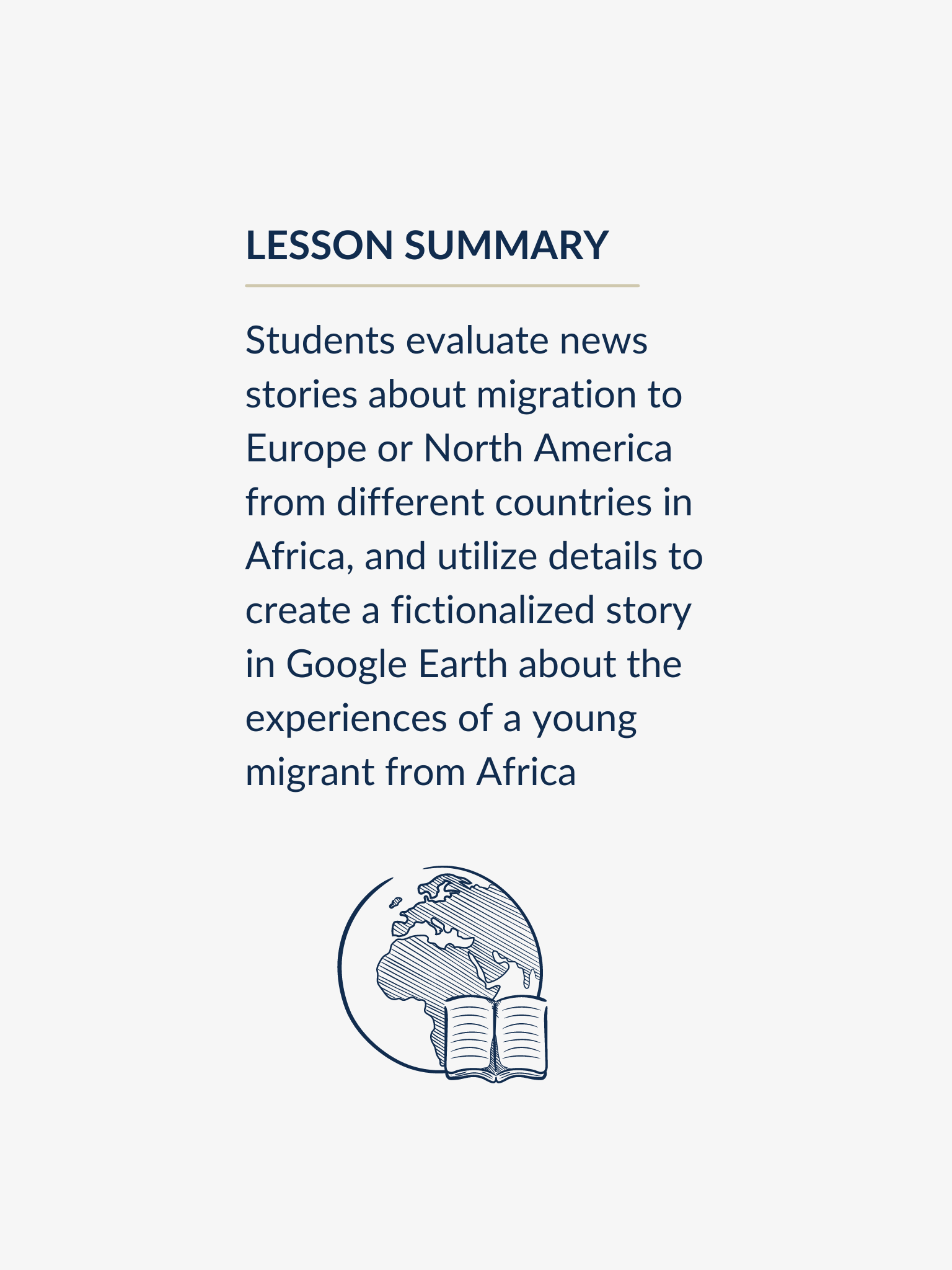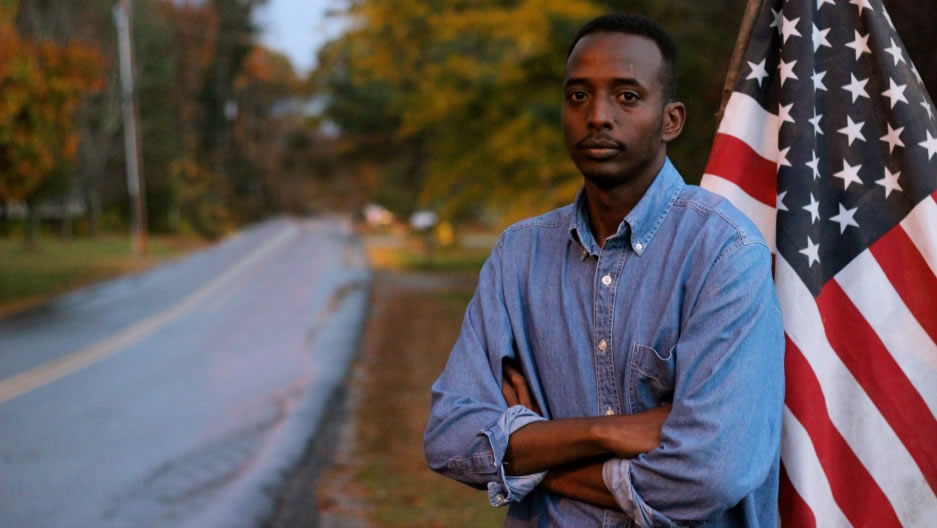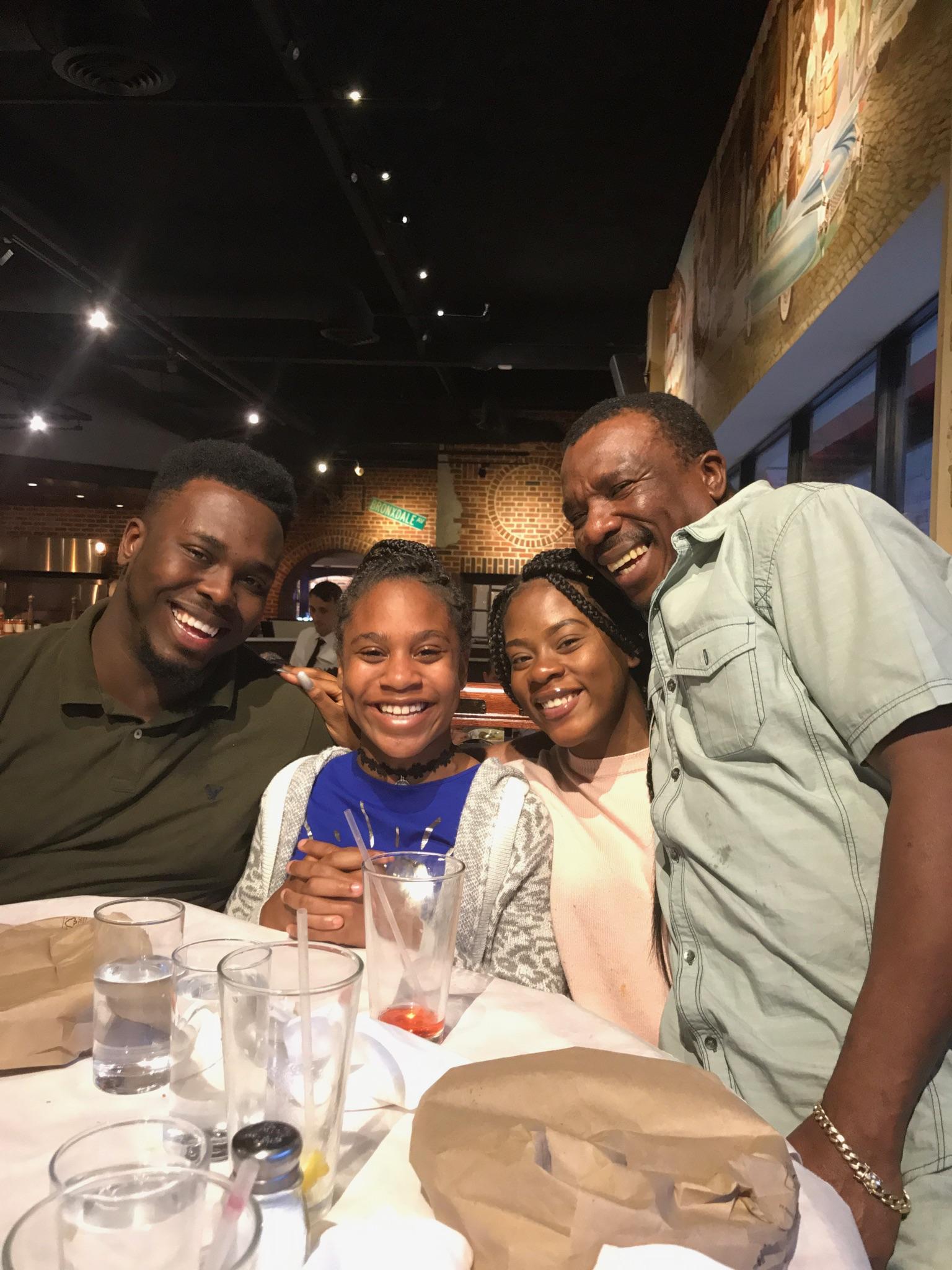This unit was created by Ken Hung, a social studies teacher at Central High School in Philadelphia, PA, as part of the spring 2021 Pulitzer Center Teacher Fellowship program on Stories of Migration. It is designed for facilitation across approximately six 75–90 minute live or virtual class periods.
For more units created by Pulitzer Center Teacher Fellows in this cohort, click here.
Unit Objectives:
Students will be able to…
- Explore push/pull factors that cause migrants to leave Africa and settle in Europe or North America
- Evaluate how migrants experience the process of assimilation in their adopted homelands and how it impacts their identities and relationships with their home countries
- Use research from Pulitzer Center-supported articles, and the novel We Need New Names, to write a fictional story on migration. Themes and plot points from the narratives will be inspired by textual evidence from their research.
Unit Overview:
In this six-lesson unit, students will explore stories from people who have migrated to Europe or North America from different countries in Africa in order to analyze the following essential questions:
- What are the push/pull factors connected to migration from Africa to Europe/North America? How do these push/pull factors shape the lived experiences of migrants from Africa?
- How does the process of assimilation impact a migrant’s sense of self? In particular, how does the process of assimilation impact a migrant’s understanding of home with regard to one’s native and adopted lands?
They will analyze articles and videos from several news outlets and will engage with the novel We Need New Names by NoViolet Bulawayo
They will then work in teams of five-six to create a fictionalized story about the experiences of a young migrant from Africa. Each team’s story will trace the migrant’s journey to North America or Europe from a country in Africa. In doing so, students will synthesize themes they have identified from reading the novel We Need New Names and articles supported by the Pulitzer Center, as well as their own supplemental research on the recent history of migration to Europe or North America. We Need New Names is the story of a young woman who migrates from Zimbabwe to Michigan in the early 2000s. Here is a summary of the book from NPR, and here is a video of author NoViolet Bulawayo reading from the novel.
Students will use Google Earth to tell their fictionalized stories. They will create Google Slides outlining six scenes from their imagined stories of a person migrating from the African continent, and then tag the slides to six different locations on Google Earth that serve as settings for those moments. For example, a scene could take place in a city where the main character of their story lived before migrating or a body of water the character crosses to get to Europe or North America. The scenes can be set in the migrant’s home country, adopted country in Europe or North America, or any place in between. Students will supplement their slides by recording video monologues and making photo collages that appear on their Google Slides.
Some things to consider:
Students should be aware that while they are making a fictionalized story, they are dramatizing events that connect to the real-life experiences of people, including potentially their fellow classmates. Students should exercise sensitivity when they create characters and narratives and be aware of how they are representing marginalized groups. Also, you may want to remind students that they should ground their story and characters in their research.
Narratives about migrants often just focus on the suffering of migrants. Encourage students to challenge this narrative (e.g. explore ways that migrants overcome problems, address structural issues that lead to migration, create characters that are defined by traits such as their interests and personality types as opposed to just their status as a migrant)
Skills:
- Students will use textual evidence from Pulitzer Center-supported articles and online research to craft a fictional narrative informed by the real-life experiences of immigrants from Africa.
- Students will use textual evidence from the novel We Need New Names to craft narratives that reflect the experience of migrants.
- Students will collaborate in groups of five-six to write a group narrative informed by their research.
- Students will present their fictionalized stories using Google Earth and learn how to use features of the program.
Six-day unit plan, including warm-ups, texts and video resources, discussion questions, activities, links to student work packets for each day of instruction, and performance tasks for the unit.

Performance Task:
Students will work in teams of five-six to write a fictional narrative tracing the movement and settlement of a migrant from Africa to Europe. Students will use the novel We Need New Names as a foundational text and will draw themes they use in their group narrative from the book. Students will tell their narrative using Google Earth as a platform and incorporate location tags, slides, and videos supported by Google Earth.
Some things to consider:
Students should be aware that while they are making a fictionalized story, they are dramatizing events that connect to the real-life experiences of people, including potentially their fellow classmates. Students should exercise sensitivity when they create characters and narratives and be aware of how they are representing marginalized groups. Also, you may want to remind students that they should ground their story and characters in their research.
Narratives about migrants often just focus on the suffering of migrants. Encourage students to challenge this narrative (e.g. explore ways that migrants overcome problems, address structural issues that lead to migration, create characters that are defined by traits such as their interests and personality types as opposed to just their status as a migrant)
Assessment/Evaluation:
Student projects will be graded using the following rubric:
- Quality of Evidence: To what extent do students create a fictionalized story guided by specific evidence from the novel We Need New Names, articles from the Pulitzer Center website, and online research on the history of migration from Africa to Europe or North America? 0-4 pts
- Quality of Monologues: Did the students write and film three one to two-minute monologues? To what extent do the monologues connect to and clearly expand on in the text of their story? 0-4 pts
- Quality of Photo Collages: Did the students make three photo collages connected to the narrative of their story? To what extent do the photo collages connect to and clearly expand on the text of the story? 0-4 pts
- Organization: Was the group’s story, as displayed on Google Earth, easy to understand? Did they have enough location tags and Google Slides? 0-2 pts.
- Creativity: How creative was the group’s story? How creative was the presentation of their story? 0-2 pts.
PA Academic Standards:
8.4.9.D. Analyze how conflict and cooperation among groups and organizations have influenced the history and development of the world.
Common Core Standards:
History/Social Studies 6-12, Comprehension and Collaboration SL3, SL4, SL5, SL6
















